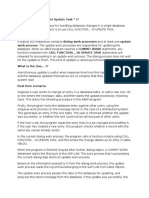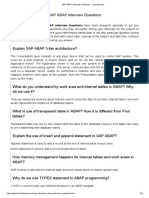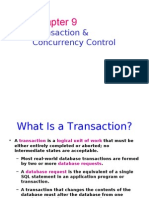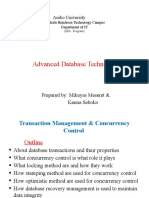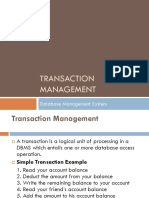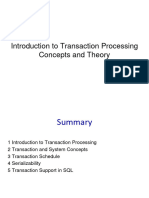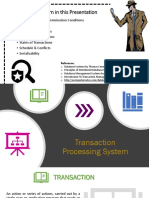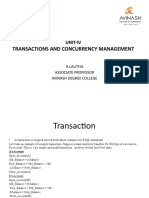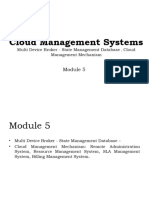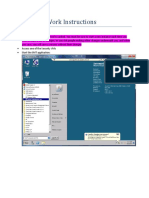0% found this document useful (0 votes)
45 views17 pages04 - SAP Transactions +update Processing
The document outlines the principles of transactions in SAP Netweaver, emphasizing the ACID characteristics of transactions which ensure data integrity. It explains the relationship between SAP transactions and database transactions, detailing how SAP manages locks to maintain consistency during concurrent access. Additionally, it describes the update process and the handling of errors during data updates to ensure that changes are either fully applied or rolled back to preserve database consistency.
Uploaded by
gmbarrozoCopyright
© © All Rights Reserved
We take content rights seriously. If you suspect this is your content, claim it here.
Available Formats
Download as PDF, TXT or read online on Scribd
0% found this document useful (0 votes)
45 views17 pages04 - SAP Transactions +update Processing
The document outlines the principles of transactions in SAP Netweaver, emphasizing the ACID characteristics of transactions which ensure data integrity. It explains the relationship between SAP transactions and database transactions, detailing how SAP manages locks to maintain consistency during concurrent access. Additionally, it describes the update process and the handling of errors during data updates to ensure that changes are either fully applied or rolled back to preserve database consistency.
Uploaded by
gmbarrozoCopyright
© © All Rights Reserved
We take content rights seriously. If you suspect this is your content, claim it here.
Available Formats
Download as PDF, TXT or read online on Scribd
/ 17
